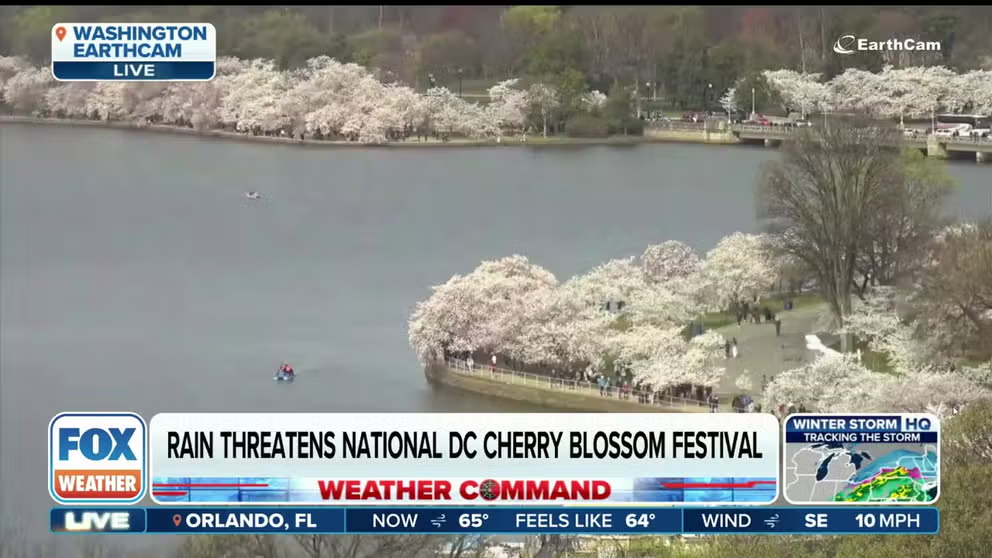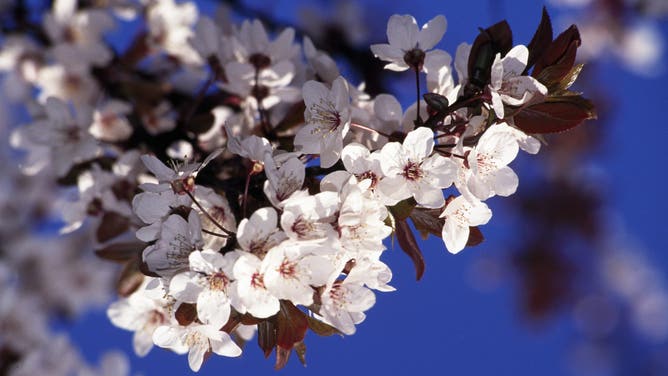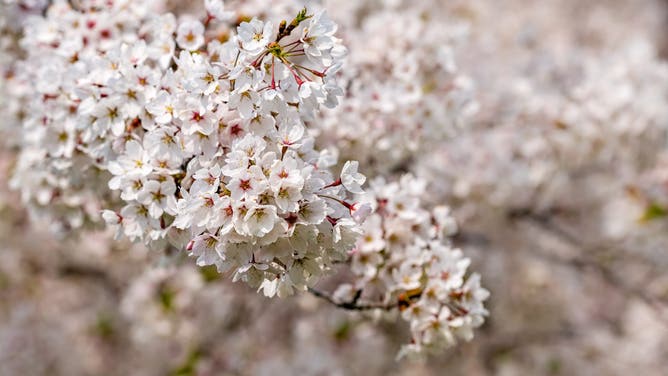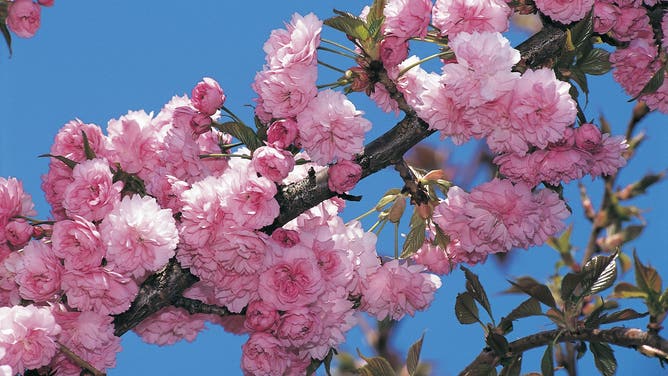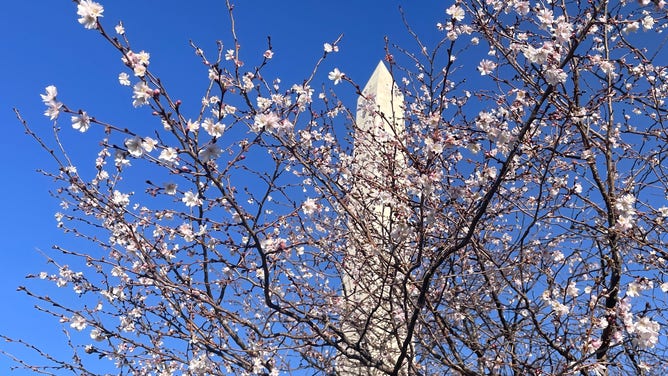Cherry blossom trees in nation’s capital reach peak bloom
The history of D.C.’s cherry blossoms began more than 100 years ago when Japan gave the U.S. 6,000 trees as a sign of friendship. Over 150 trees will be removed during the summer as a multi-year project to help curtail flooding.
Cherry blossoms reach peak bloom in Washington, D.C.
The cherry blossom trees along the tidal basin in the nation's capital are believed to have reach their peak. A series of rainy, windy days will likely put an end to the peak bloom.
WASHINGTON – The National Park Service has announced the iconic cherry blossoms that surround Tidal Basin in the nation’s capital have reached their peak bloom, leading to the gradual end of the season.
Nearly 2 million people travel to the district every year to catch a glimpse of the approximately 3,700 trees.
The annual event is highly dependent on the climate, which has steadily allowed blooms to happen earlier during the year.
The NPS considers the trees to be in peak form when 70% of the Yoshino Cherry trees are flowering.
There are around a dozen varieties of cherry trees in the District of Columbia, but the Yoshino and Kwanzan are the most common.
According to the agency, the 2024 season was the second-earliest in modern history due in part to a warm end to winter and start to spring.
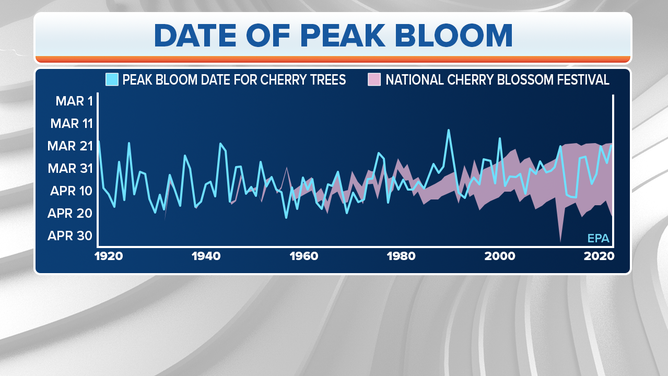
Graph showing dates of peak bloom of DC's cherry trees historically
(Environmental Protection Agency / FOX Weather)
BLOOMS OR BUST: HOW WEATHER CAN AFFECT DC’S CHERRY BLOSSOMS
"We hit that 70% on Sunday. We got really lucky because temperatures really cooled off by about 20 degrees the next day and sort of stayed in that cool area. Cooler temperatures slow the process of blooms being replaced by leaves, but we probably got as many blossoms out now as we’re going to have this year," said Mike Litterest, chief of communications for the National Mall and Memorial Parks.
The cherry trees aren't the only vegetation seeing earlier blooms, data from the USA National Phenology Network showed the leaf-out process was days to even weeks ahead of schedule across large parts of the country.
The trees surrounding the Tidal Basin are mostly ornamental and do not produce the desirable fruits like other varieties.
The cherry blossoms are not native to the mid-Atlantic and originated in Japan as part of a friendship offering during the early 1900s.
The number of trees that directly line the basin is expected to dwindle during the next several months as a $113 million multi-year rehabilitation project gets underway.
WHAT SEASON DO FRUITS AND VEGETABLES GROW IN
More than 100 trees to be removed over summer
The NPS says they are planning to remove at least 150 trees on the National Mall due to failing infrastructure and rising sea levels along the Tidal Basin.
Among the cherry trees that will be removed is one that has garnered the nickname of ‘Stumpy.’
The tree is rotted but still has a few branches that somehow produce flowers every spring.

WASHINGTON, DC - MARCH 22: High tide water reaches to the base of a cherry tree nicknamed "Stumpy" at the Tidal Basin on March 22, 2024 in Washington, DC. The National Park Service announced that it will begin to cut down over 140 Cherry Blossom trees around the Tidal Basin and West Potomac Park in anticipation of construction for an upgraded sea wall to guard against flooding.
(Photo by Alex Wong/Getty Images / Getty Images)
"There is good news for Stumpy fans. Our friends at the National Arboretum are going to take some clippings. They’ll propagate those clippings and give us, essentially, some clones with the same genetic DNA material that we will be able to plant when the project is over," said Litterest.
By the time the project concludes in 2027, the NPS estimates nearly 500 trees will be replanted around the district, including more than 250 cherry trees.
